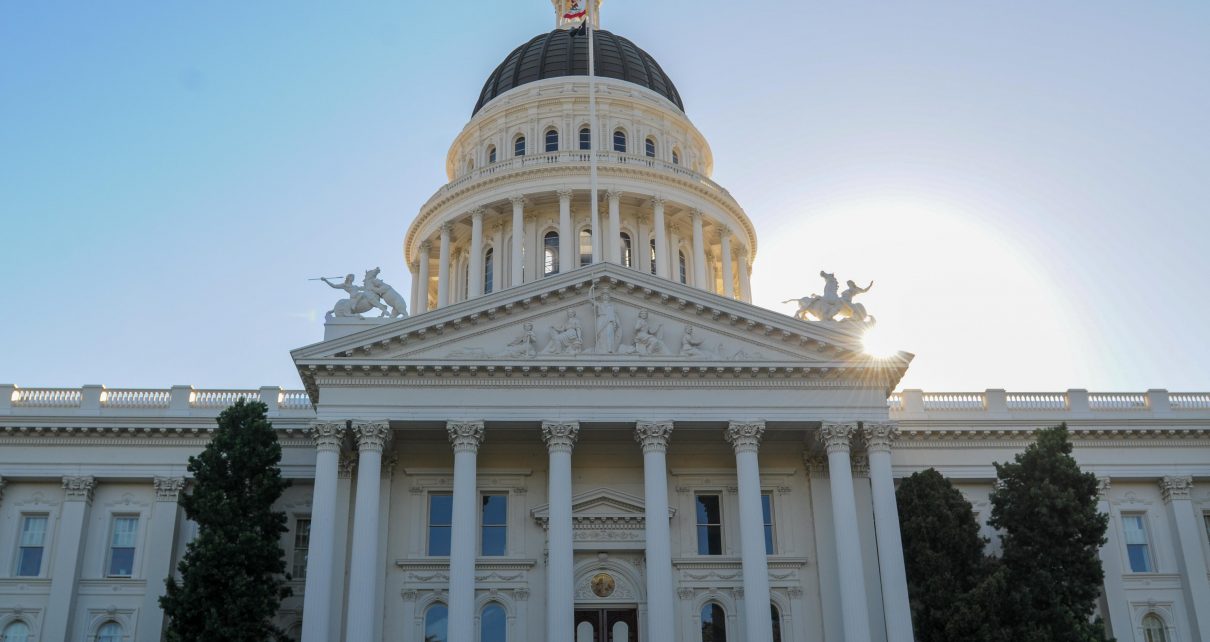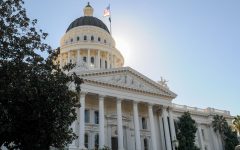
California State Capitol. (Photo: Kevin Sanders for California Globe)
California Owes the Feds More Than THREE YEARS of its Total Unemployment Tax Revenue
Future looks even more expensive for California business owners
By Thomas Buckley, June 15, 2023 3:59 pm
Right now, the California Employment Development Department owes the federal government $17,649,112,337.77 (billion) for the money it borrowed during the pandemic.
The EDD expects to take in about $16.2 billion over the next three years in unemployment taxes.
That means California owes the feds more than THREE YEARS of its total unemployment tax revenue.
The EDD expects to spend about $15 billion directly on unemployment benefits in the same time period – therefore if it took every dime of “extra money” it collected and spent nothing on administration it would take more than 50 years to pay off the debt.
A debt, by the way, caused entirely by the fraud losses of about $40 billion the EDD – then under the watchful eye of now federal Secretary of Labor hopeful Julie Su – incurred due to its complete failure to notice and then bother to promptly deal with international looting that plagued the agency – https://californiaglobe.com/articles/california-edd-blamed-fed-program-for-fraud-new-numbers-show-that-is-impossible/ .
The debt will be paid by a surcharge the feds have added to the regular unemployment taxes until the debt is paid …with interest. Of course, the feds seem to be a pretty agreeable lender – there is no strict payback time set, the interest is low – about 1.7% – and it is rather doubtful they will send someone to break the governor’s legs if California gets behind.
California was one of the very few states that did not use left-over federal COVID money to pay its pandemic-related unemployment debt. In fact, California is one of only three jurisdictions that still owes – the other two are the Virgin Islands and New York – and currently holds 70% of the entire outstanding national pandemic unemployment debt.
New York also decided – like California – to shrug its fraud and incompetence induced debt onto its business community, though New York did actually ask the feds that the loan be entirely forgiven. That did not get far, though if Californian – and cause of the debt Julie Su – is appointed labor secretary, who knows what could happen if Gavin gives her a call.
The surcharge will increase significantly, if not exactly exponentially, over the coming years. It starts with an additional 0.3% of the current federal tax paid (ironically, that specific tax pays for things like loaning deadbeat states like California money – and the taxation circle is complete… but I digress) and increase another 0.3% each year until the debt is paid.
But there’s more – after year three an additional 0.6% is added and in year five a different add-on program begins.
Currently – and this is a very rough average due to different rates paid by different businesses – the average per employee annual unemployment tax comes out to be about $250, with the surcharge hitting $42, or about 15%, later this year.
Paying the EDD debt will cost the equivalent of a total surcharge of at least $1,000 per employee; therefore the debt could take a decade or more to pay.
That is if the EDD doesn’t keep borrowing from the feds – which it is still doing – to cover its bills. If that continues, the debt horizon could very well fade into the mists of the mid-century while the EDD just keeps stumbling along.
In theory, if one is of a cynical mindset, if the borrowing to pay current benefit costs keeps apace, the surcharge could morph into a near permanent tax increase without having to actually pass a tax…but that may be giving the EDD – even other Sacramento state workers make fun of it – a bit too much ingenuity credit.
That prospect is daunting for state business owners, said Tom Manzo, founder of the California Business and Industrial Alliance.
“Why do businesses have to continually pay for the incompetence of our government?” Manzo said. “This is one of the main reasons people are leaving California.”
Note – the figures above are taken from the October, 2022 EDD Trust fund Forecast. The agency usually releases two such reports each year – in October and in May. The May, 2023 report – which will show updated and specific surcharge cost information – has yet to be released and is now not expected to appear until July. Whether or not that, too, is related to the floundering Su nomination – https://californiaglobe.com/articles/threatened-with-subpoena-su-testimystifies-congress/ . Remember, it’s not nice to release potentially unflattering information about your ex-boss and possibly future savior when they’re right in the middle of a possible promotion.
- Benefit Fraud Problems and Solutions - November 7, 2024
- A Little Exit Poll - November 5, 2024
- Tomorrow’s Headlines Today! - November 5, 2024





Aren’t illegals getting unemployment now?
“Right now, the California Employment Development Department owes the federal government $17,649,112,337.77 (billion) for the money it borrowed during the pandemic.”
Thomas, I doubt very much that this debt will ever be returned. The money came from the Federal coffers where the National Debt just reached $32 TRILLION. Anyone who understands how MUCH this really is, knows that this amount of money can NEVER be repaid in our lifetime and beyond….:-(
Don’t worry. California is already charging businesses in this state a surcharge to pay for the state’s incompetence.
Newsom and the Commucrats strike again!
The destruction of Cali and Texas on schedule. Once the two largest states tumbled the rest of the nation falls.
Klaus Schwab of the WEF has disciples in both Newson and Texas Governor Gregg Abbott.
The war in The Ukraine ramped up now pending is the same with regard to China.
The democrats and republicans have sold us into destruction and bondage pursuant to a soon to fail currency.
Good luck all and prepare for invocation of the “three day rule”.